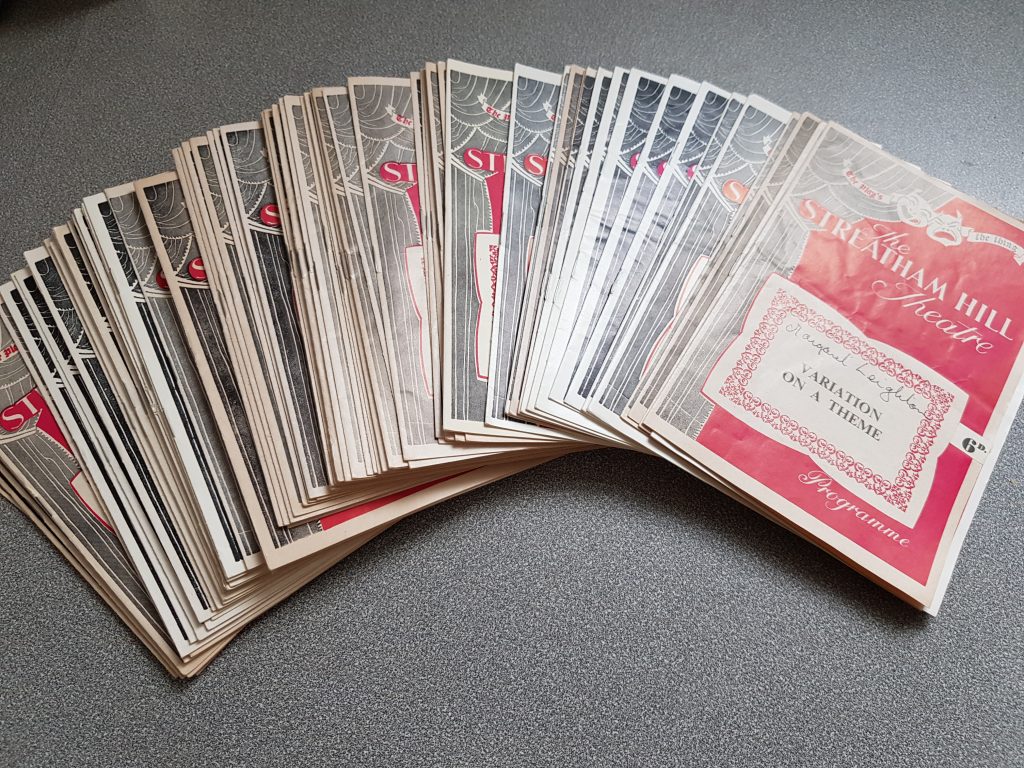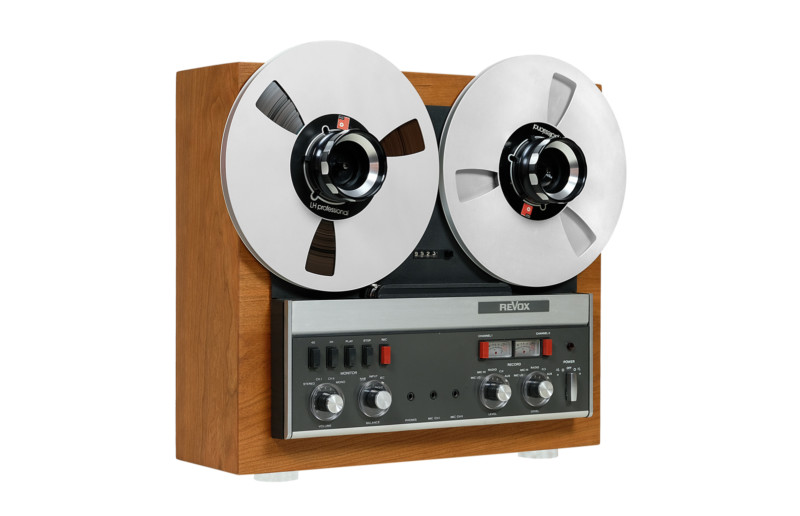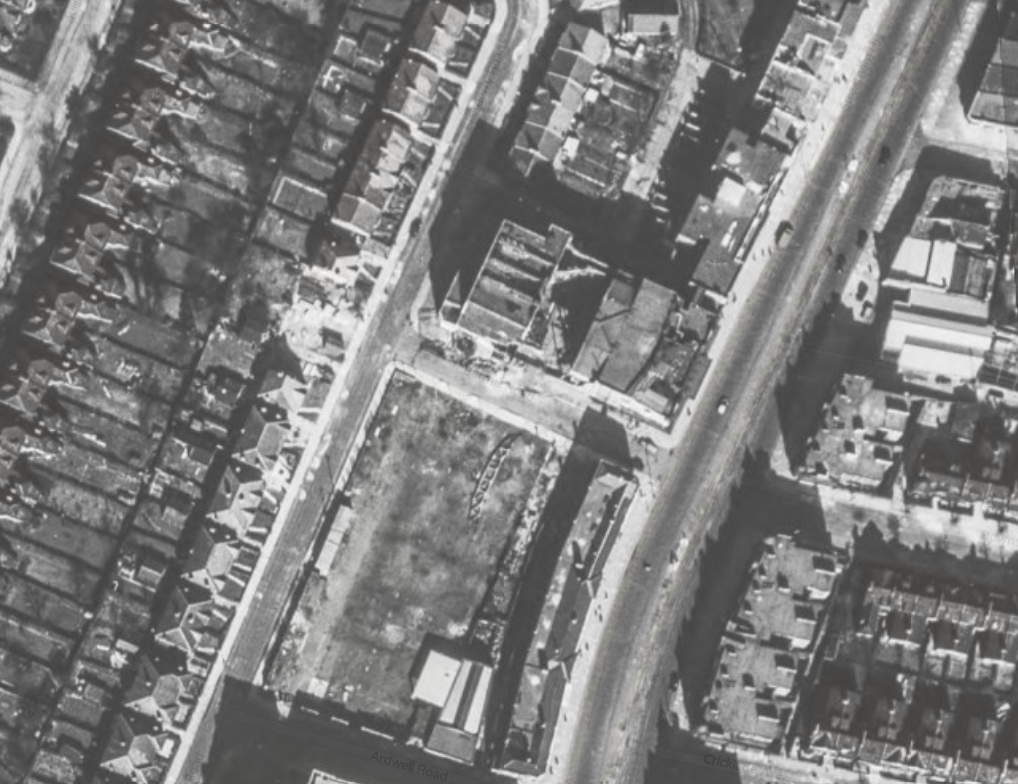Wake Up and Dream! programme now online
The programme from the theatre’s opening show in 1929 is now available online as a PDF, with thanks to a supporter who lent us an original copy to scan. It joins the collection of programmes in our archive.
The programme from the theatre’s opening show in 1929 is now available online as a PDF, with thanks to a supporter who lent us an original copy to scan. It joins the collection of programmes in our archive.
Published: (Updated: )
Stay Free, the 1978 song by The Clash (JOE STRUMMER, MICK JONES, PAUL SIMONON, TOPPER HEADON), makes a couple of references to Streatham when it was still a centre of entertainment in the late 70’s.
An’ weekends we’d go dancing
Down Streatham on the bus
It also contains the lines (referring to the Crown & Sceptre pub)
I practised daily in my room
You were down the Crown
Planning your next move
And if you’re in the Crown tonight have a drink on me
The Historic England Archive allows you to explore over 400,000 digitised photos taken from aerial photo collections of over 6 million photographs. Here are some showing Streatham Hill Theatre, with many being RAF survey photos showing WW2 bomb damage – you can see the big hole in the theatre and the recovered roof beam on open ground nearby.
Our archives are now recorded on the Community Archives at the group’s website.
SW Londoner Magazine has covered The Friends campaign in two recent articles by Henry Bird:
Ten theatres added to annual ‘Theatres at Risk’ register, highest number since 2013
Streatham Hill Theatre marks fourth year on ‘Theatres at Risk’ register
Published: (Updated: )
We have received a kind donation of 86 Streatham Hill Theatre programmes for our archive, from Edge Hill University. We thank their Professor of Theatre Praxis in the Department of Creative Arts who found them in their store and got in touch with us.
We’ll add these to our list of programmes at some point.


Published: (Updated: )
Neil Heayes recorded an interview with Natalie Dunton for the British Library Theatre Archive Project on 16th January 2008.
He was a resident of Streatham and talks of seeing shows at the Streatham Hill Theatre in his two-part interview – Part 1 and Part 2 (and from page 2 of the transcript):
NH: … As I say we also lived in Streatham, which is just up the road from Brixton and there was another famous theatre called the Streatham Hill Theatre. The Streatham Hill Theatre was opened in the 1930s by Evelyn Laye, she was a very famous actress of her day, she laid the foundation stone. Again, a very large theatre, very beautiful and it used to take all the shows, either before they went into the West End or when they went out on tour. In those days shows always toured, they always went on tour – they could afford to do it in those days [Laughs] even the big musicals. In fact some shows of course were specifically designed for touring.
One of the shows I do remember seeing there – now it must have been when I was 7 actually, it was 1937 – it was Franz Lehár’s Paganini with Richard Tauber and Evelyn Laye. Richard Tauber was a very famous tenor of his day, he was Jewish – part-Jewish – and so when the Nazis came to power in Vienna, he could no longer go back, so he made his career over here. I’m not sure if he became naturalised, I don’t think so, but he certainly stayed here and he sang practically everything, he was a composer, conductor.
During the war, when he was no longer singing opera very much, he used to conduct, and he conducted and produced Die Fledermaus, which is one of the famous operettas that he was famous for as well. He also the first German Calaf in Turandot, that was back in 1927/28 I think, but of course I didn’t see that!
Anyway I do remember Paganini very well, a most beautiful production. I remember Evelyn Laye; she played a princess who falls in love with the violinist, Paganini. I was terribly impressed as a 7 year old as she came in with a white uniform and a splendid white horse, I thought that was terrific. Then I was very disappointed ’cause I looked down into the orchestra pit and when Paganini was supposed to play the violin as he was supposed to I saw somebody doing it for him and I felt very down about by that, I really did!
[Laughs] I think what used to happen with my mother, when she took me to the theatre. I used to go to matinées of course, as I was too young to go out much in the evenings but I regularly had to ‘have a bilious attack’ and take a note to school saying I couldn’t appear that day and of course in the afternoon we went to the theatre! All strictly illegal but there we are!
We thank the British Library for the use of this extract.

Published: (Updated: )
The late Professor Ian MacKillop recorded an interview with T K Vincent for the British Library Theatre Archive Project on 10th November 2003.
He was born in Bromley in 1939 and was a scholarship pupil at Dulwich College. He mentions in the interview his time with the National Youth Theatre. He talks of seeing shows, such as Look Back in Anger and The Blue Lamp at the Streatham Hill Theatre from 24:30 in the interview (and on page 6 of the transcript).
He tragically died of a heart attack the following year, 2004, aged 65.
TV: You were talking about rebellion at school, which interests me because 1956, the year of the National Youth Theatre, was also the year of ‘the angry young man’ and John Osborne’s Jimmy Porter. You were probably around the age of the angry young man at the time; do you recall anything in relation to this?
IM: I do recall, I was younger than the angry young men but I recall going to see Look Back In Anger, not at the Royal Court Theatre but at the Streatham Hill Theatre, and I think Jimmy Porter was played by Alan Dobie, I think, who was – did he originally play Jimmy Porter? But I tell you something I did see at the Streatham Hill Theatre. The Streatham Hill Theatre was a very big theatre in another part of South London and it had big pantomimes, Gilbert & Sullivan shows and touring productions, but I imagine it’s a bit like the Watford Empire is today, but I saw one production there that I think was quite significant, The Blue Lamp, which was a very, very popular film and it was about a policeman’s family, good old British copper’s family and it was about a particular criminal, a post-war criminal of the new sort. The old criminals were sort of decent working class criminals with flat caps and Woodbine cigarettes and certain specialisms, and were essentially gentle. But the new sort of criminal was the sort of spiv – do you know the expression, ‘spiv‘ as it was called at the time? A slightly unstable young man who was always doing little deals – and he was played extremely well in the film called The Blue Lamp at the time by Dirk Bogarde and you could see this film just by getting it out of the video library and that gives you an exact bit of history of that moment. The film has a voice-over which says, we have a special problem today and it is in these sort of young men. Now the terrible thing in The Blue Lamp is that the copper – who became a national figure, Sergeant Dixon in a television series called Dixon of Dock Green, played by Jack Warner and he enshrined, he made the historical impression, ‘Evenin’ all‘, I think it was. But before it became a television series he appeared in this, and there was a terrible dramatic moment in which the copper confronted the tearaway criminal who drew a gun and, ‘put the gun down, sonny, there is no problem, just put the gun down, it’s alright, you’ll be alright, I’ll look after you, alright‘. And then he shot him, and the audience was astounded that this fantastically reliable policeman could be shot. This was staged in the theatre in which there was a chase of the young criminal around the theatre, he escaped into the auditorium. So, that was more interesting to me than Look Back in Anger which I never really caught on with as being… I mean, I never got sort of involved with Look Back in Anger, but I did get involved with The Entertainer, which I found astoundingly moving. I maybe still have the copy I bought at the time, yes.
We thank the British Library for the use of this extract.
The RAF Aerial Photo collection 1945-49 shows the damage suffered by Streatham Hill Theatre as a result of being hit by a flying bomb in 1944.
Note the hole in the roof and the south wall, and what looks like a recovered roof truss lying in the open ground to the south.

From Layers of London using images courtesy of Historic England.
Published: (Updated: )
The Society of London Theatre has published a new report raising awareness of the specific needs of London’s historic theatres and their role as a vital asset to the city’s night time economy, central to pandemic recovery.
Although focused on London’s West End theatres, it is very relevant to Streatham Hill Theatre in the ‘West End of South London’.
‘A Call to Action – Securing the future of London’s theatres’ sets out the unique operational and access requirements of the London theatre industry, and calls for better collaboration between theatre operators and those responsible for London’s public realm, highways and land usage, to protect the invaluable cultural heritage that has been part of London’s identity for over 350 years.
The report, commissioned by the Society of London Theatre (SOLT) and created by urban design specialists Publica, found that London’s theatres play a crucial role in the city’s ecosystem, supporting over 20,000 jobs and contributing £133 million in annual VAT to the Treasury.
The document was created in consultation with SOLT members and the Theatres Trust during workshops, surveys and site visits between 2019 and 2021, and is addressed to a wide range of stakeholders including MPs, Local Authorities, the GLA, TFL, London’s Business Improvement Districts, landowners and developers.
It also found that the significant physical requirements for the day-to-day running of a theatre – which include get-ins, changeovers, a variety of different public and private events, box office operation and building maintenance – are often overlooked by councils and developers.
Justine Simons OBE, Deputy Mayor for Culture and the Creative Industries, said:
‘London is home to the world’s best theatres but the pandemic has had a catastrophic impact on the whole industry. Theatre will play a crucial role in London’s social and economic recovery, attracting visitors from across the world as well as supporting the economy as a whole. Which is why today’s call to action couldn’t be more timely or urgent.’
Julian Bird, Chief Executive of SOLT, said:
‘Theatres are not just cultural hubs – they are historic landmarks, economic powerhouses and drivers to surrounding tourism, retail and hospitality businesses. They are also 24-hour buildings with a unique set of needs. This landmark report tells us that without active engagement and collaboration between politicians, placemakers and the theatre sector, we are at risk of losing these incredibly valuable assets.
‘Theatre operators want to be engaged as early as possible in any plans, policies and developments which might affect them. We hope that this document facilitates greater communication, coordination and understanding, with the aim of safeguarding our remarkable theatre heritage for future generations.’
Leave a Comment